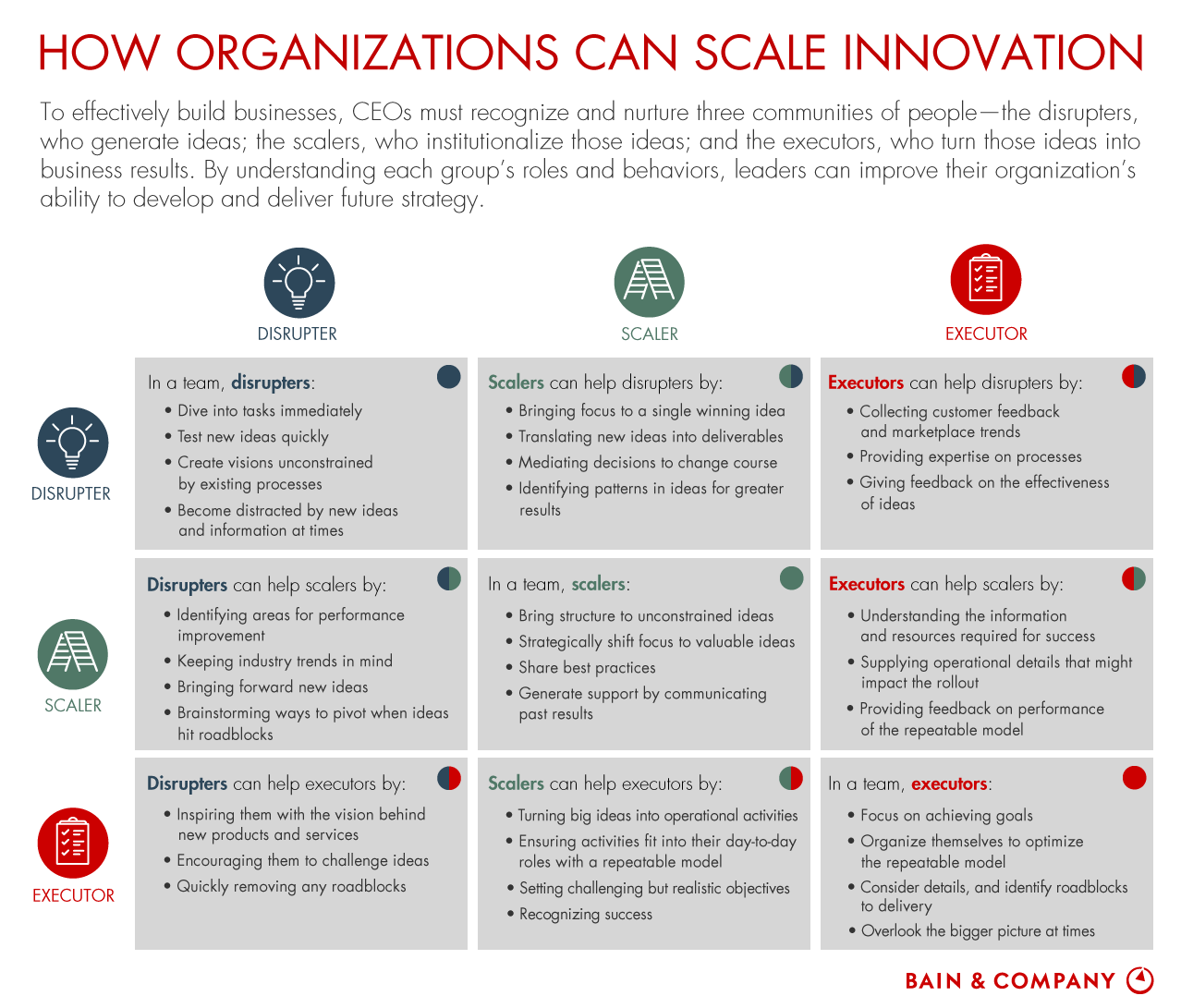Founder's Mentality Blog

How do great companies bring innovative ideas to customers at industrial scale? Micro-battles—small, fast-moving initiatives focused on strategic priorities—are set up to guide companies through the process. They help organizations generate big disruptive ideas, translate them into functional ways of working and scale them across the enterprise. But while the process is necessary, it isn’t enough. Leading companies also obsess over their people.
We argue that every organization implicitly comprises three types of people. We call these groups the three communities.
- The Agile/disruptive/innovator community: They disrupt core products and services, business processes and even the business model. Disrupters are your idea generators. They feel stifled by processes and systems, believing that they can best perform when liberated from tight restrictions. Disrupters are the talk of the town—everyone wants more innovation.
- The expert/execution community: They are the core engine of any great company. Executors make up your sales teams, your customer care teams, and your manufacturing and logistics managers—to name a few groups. They are experts at what they do, and they flawlessly execute against established playbooks. Executors are under massive pressure to deliver results. They value delivery and the people who help them deliver.
- The Scaling CommunitySM: They act as the bridge between disruption and playbook. Scalers take innovation and industrialize it. They are constantly learning and exchanging ideas. Scalers are vital to business building, but leadership rarely recognizes them.
Firms that recognize and nurture these communities excel at building businesses. In fact, one of the key roles of a CEO is to develop the communities and encourage them to work together. This doesn’t mean that you need to produce a new org chart. Instead, CEOs should create opportunities for the communities to communicate, collaborate, and cultivate their roles and voices. More specifically, there are five ways that CEOs can help the three communities build relationships.
- Help define the communities and their members. Most firms don’t think about their organization as three communities. It’s the CEO’s job to start a conversation about the three communities among leadership. You need leaders to understand if they feel most comfortable innovating, executing or acting as the bridge between the two motions.
- Introduce the communities to each other, and discuss their typical member profile. A unique set of behaviors and personality traits help to define each community. The best CEOs know that disrupters are energized by bouncing their ideas off each other but that they might be discouraged by scalers. Scalers, who are the ones to say, “yes, that’s a great idea, but …,” often challenge disrupters. Yet with the right relationship, disrupters can actually find the scalers’ feedback to be just as energizing as their own community’s input. Similarly, executors don’t always value disrupters, finding their ideas distracting from daily delivery. But with the right management, these two communities can be the most natural of partners. When disrupters engage executors for input on the next wave of products and services, they can inspire the community by collaborating on competitive offerings. By understanding what makes each community tick, everyone can get along better and work more effectively.
- Review the community matrix. Every individual should know his or her role in the community and the organization as a whole. Leadership can communicate what each community can give to the others, as well as what they can expect in return (see the infographic “How Organizations Can Scale Innovation”).
- Use micro-battles to work on specific business-building ideas. Micro-battles help communities collaborate on strategic priorities. They give members specific roles in developing prototypes and Repeatable Models®. Through micro-battles, CEOs can encourage shared learning and improve the organization’s ability to work with each other.
- Seek feedback on community interactions. In micro-battles, we run sessions for senior leadership to review successes and failures. These sessions present an opportunity to assess how the three communities are working together and make adjustments as needed.


To grow sustainably and profitably, companies must rediscover the art of business building. But in order to build businesses, they need great ideas that can be scaled into Repeatable Models. It’s up to the CEOs to create the three communities and task them with the job of working together on the next generation of great ideas and great businesses.
James Allen is a senior partner with Bain’s Global Strategy practice, and he is based in London. He coauthored The Founder’s Mentality.
Great Repeatable Models® and Repeatable Models® are registered trademarks of Bain & Company, Inc.
Scaling Community℠ is a service mark of Bain & Company, Inc.

Accelerate and Fund Scaling: Actions to Address the Hardest Change Issues
How companies can address the hardest change issues of the micro-battles journey.